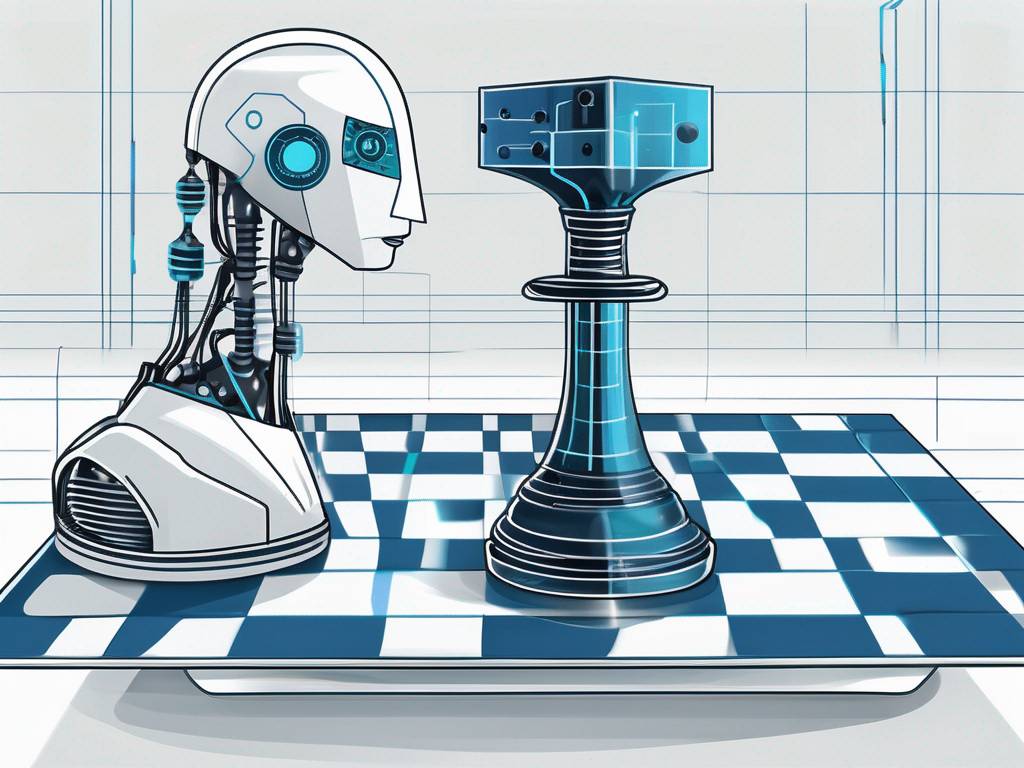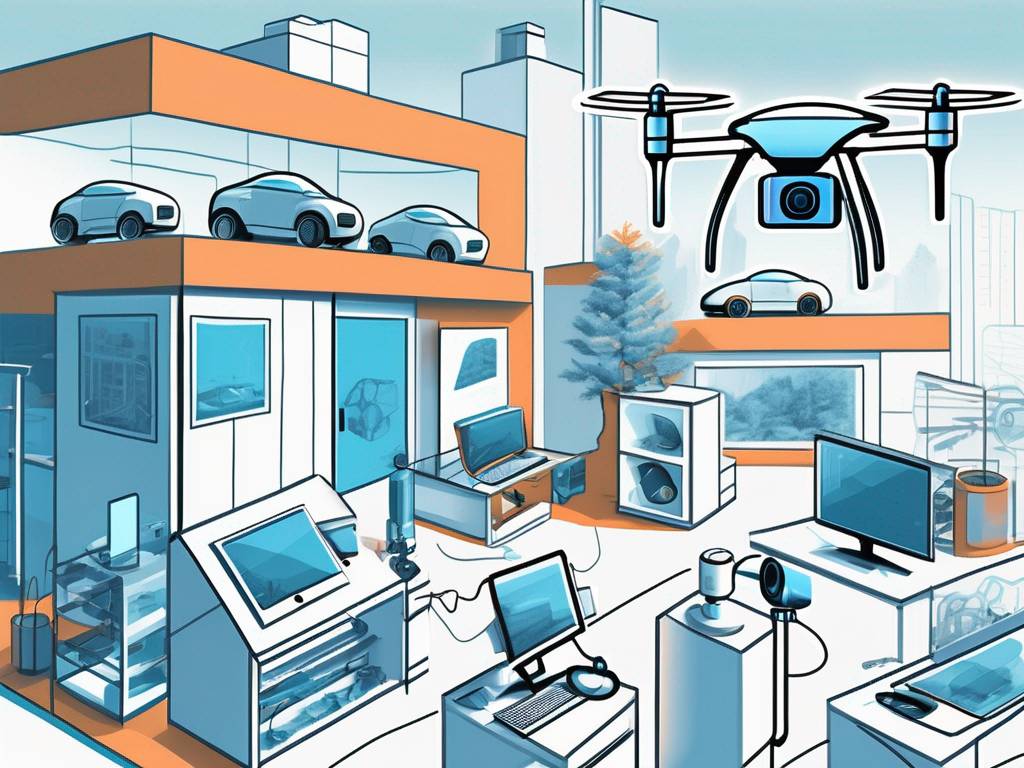Speech Recognition: Artificial Intelligence Explained
Speech recognition is a fascinating and complex field within the broader sphere of artificial intelligence (AI). It involves the development of algorithms and systems that can recognize and translate spoken language into text by computers. This technology has a wide range of applications, from voice user interfaces such as Siri and Alexa, to transcription services, voice biometrics, and more.
The development of speech recognition technology has been a long journey, with the earliest systems dating back to the 1950s. Over the decades, the technology has evolved significantly, with modern systems being able to understand and respond to human speech with remarkable accuracy. This article will delve into the intricacies of speech recognition, exploring its history, how it works, its applications, and the challenges it faces.
History of Speech Recognition
The history of speech recognition is a story of continuous improvement and innovation. The earliest systems were developed in the 1950s and 1960s, and were capable of recognizing only a limited number of words spoken by a single user. These systems were based on template matching techniques, where each word was represented as a template, and recognition was achieved by matching the input speech with the stored templates.
Over the years, speech recognition technology has evolved significantly. In the 1970s and 1980s, researchers began using statistical methods to improve the accuracy of speech recognition systems. This led to the development of the Hidden Markov Model (HMM), a statistical model that is still widely used in speech recognition today.
Hidden Markov Model (HMM)
The Hidden Markov Model (HMM) is a statistical model that is widely used in speech recognition. It is based on the concept of Markov processes, which are mathematical models for systems that undergo transitions between different states. In the context of speech recognition, these states could represent different phonemes or words.
The HMM is particularly well-suited for speech recognition because it can model the temporal variability of speech. This means that it can handle the fact that the same word can be pronounced differently by different people, or even by the same person at different times. The HMM also has the ability to handle uncertainty and noise, which are common in real-world speech signals.
How Speech Recognition Works
Speech recognition involves several steps, from the initial capture of the speech signal to the final output of the recognized text. The process begins with the conversion of the speech signal into a form that can be processed by the computer. This is typically done by a process called feature extraction, which involves extracting relevant features from the speech signal that can be used for recognition.
Once the features have been extracted, they are fed into the speech recognition algorithm. This algorithm is responsible for matching the input features with the stored templates or models, and outputting the recognized text. This process involves several sub-steps, including acoustic modeling, language modeling, and decoding.
Acoustic Modeling
Acoustic modeling is the process of creating statistical representations of the sounds that make up speech. These models are used to represent the various phonemes (the smallest units of sound) in a language. The goal of acoustic modeling is to accurately represent the variability in the way different people pronounce the same phonemes.
There are several techniques used for acoustic modeling, including Gaussian Mixture Models (GMMs) and Deep Neural Networks (DNNs). GMMs are a type of statistical model that can represent complex distributions, while DNNs are a type of machine learning model that can learn to recognize patterns in data.
Language Modeling
Language modeling is the process of creating statistical models of the structure of language. These models are used to predict the probability of a sequence of words, which helps the speech recognition system decide between different interpretations of the speech signal.
There are several techniques used for language modeling, including n-gram models and recurrent neural networks (RNNs). N-gram models are a type of statistical model that can represent the probability of a word given the previous n-1 words, while RNNs are a type of machine learning model that can learn to recognize patterns in sequences of data.
Decoding
Decoding is the final step in the speech recognition process. It involves using the acoustic and language models to generate a transcription of the speech signal. This is typically done using a search algorithm, which searches through the space of possible transcriptions to find the one that is most likely given the input features and the models.
There are several techniques used for decoding, including Viterbi decoding and beam search. Viterbi decoding is a dynamic programming algorithm that can find the most likely sequence of states in a HMM, while beam search is a heuristic search algorithm that can find the most likely sequence of words in a language model.
Applications of Speech Recognition
Speech recognition technology has a wide range of applications, from voice user interfaces to transcription services, voice biometrics, and more. These applications leverage the ability of speech recognition systems to understand and respond to human speech, enabling more natural and efficient interactions between humans and machines.
Voice user interfaces, such as Siri and Alexa, use speech recognition to enable users to interact with their devices using voice commands. This allows users to perform tasks such as setting alarms, making phone calls, and searching the web without having to use a keyboard or touchscreen.
Transcription Services
Transcription services use speech recognition to convert spoken language into written text. This can be used for a variety of purposes, such as transcribing interviews, meetings, or lectures. With the advancement of speech recognition technology, these services are becoming increasingly accurate and efficient, making them a valuable tool for many industries.
For example, in the medical field, transcription services can be used to transcribe doctor-patient conversations, enabling the creation of accurate and detailed medical records. In the legal field, transcription services can be used to transcribe court proceedings, providing a written record of the proceedings.
Voice Biometrics
Voice biometrics is another application of speech recognition technology. It involves the use of voice as a form of identification and authentication. By analyzing the unique characteristics of a person’s voice, such as the pitch, tone, and rhythm, voice biometric systems can verify a person’s identity with a high degree of accuracy.
This technology has a wide range of applications, from securing mobile banking transactions to controlling access to secure facilities. With the increasing prevalence of voice user interfaces, voice biometrics is becoming an increasingly important tool for ensuring security and privacy.
Challenges in Speech Recognition
Despite the significant advancements in speech recognition technology, there are still many challenges that need to be overcome. One of the main challenges is dealing with the variability in the way people speak. This includes variations in accent, pronunciation, speed, pitch, and volume, all of which can affect the accuracy of speech recognition systems.
Another challenge is dealing with background noise. In real-world environments, speech signals are often contaminated with various types of noise, such as traffic noise, music, or other people talking. This noise can interfere with the speech recognition process, making it difficult for the system to accurately recognize the speech.
Dealing with Variability
Dealing with variability in speech is a major challenge in speech recognition. This variability can come from many sources, including the speaker’s accent, pronunciation, speed, pitch, and volume. To overcome this challenge, modern speech recognition systems use sophisticated acoustic and language models that can handle this variability.
For example, deep neural networks (DNNs) are often used for acoustic modeling, as they can learn to recognize complex patterns in the speech signal. Similarly, recurrent neural networks (RNNs) are often used for language modeling, as they can learn to recognize patterns in sequences of words. These models are trained on large amounts of data, which allows them to learn the variability in the way people speak.
Dealing with Noise
Dealing with noise is another major challenge in speech recognition. In real-world environments, speech signals are often contaminated with various types of noise, such as traffic noise, music, or other people talking. This noise can interfere with the speech recognition process, making it difficult for the system to accurately recognize the speech.
To overcome this challenge, modern speech recognition systems use noise reduction techniques, which aim to remove or reduce the noise in the speech signal. These techniques can be based on statistical methods, such as spectral subtraction or Wiener filtering, or on machine learning methods, such as deep neural networks (DNNs).
Future of Speech Recognition
The future of speech recognition looks promising, with ongoing research and development aimed at improving the accuracy and robustness of speech recognition systems. One of the main areas of focus is the development of more sophisticated models and algorithms, which can better handle the variability and noise in speech signals.
Another area of focus is the development of systems that can understand and respond to natural language. This involves not only recognizing the words that are spoken, but also understanding the meaning behind them. This is a challenging task, as it requires the system to have a deep understanding of language and the world.
Natural Language Understanding
Natural language understanding (NLU) is a field of artificial intelligence that focuses on the understanding of human language by machines. It involves not only recognizing the words that are spoken, but also understanding the meaning behind them. This requires the system to have a deep understanding of language, including its syntax, semantics, and pragmatics.
There is a lot of ongoing research in NLU, with the goal of developing systems that can understand and respond to natural language in a way that is similar to how humans do. This could enable more natural and efficient interactions between humans and machines, and open up new possibilities for the application of speech recognition technology.
End-to-End Speech Recognition
End-to-end speech recognition is a new approach to speech recognition that aims to simplify the speech recognition process by eliminating the need for separate acoustic and language models. Instead, a single neural network is used to map the input speech signal directly to the output text.
This approach has several advantages, including simplicity, flexibility, and the ability to learn directly from the data. However, it also poses several challenges, such as the need for large amounts of training data and the difficulty of handling variability and noise. Despite these challenges, end-to-end speech recognition is a promising direction for the future of speech recognition.
Transform Your Ideas into Innovative Solutions with WestLink
As the world of speech recognition and artificial intelligence continues to evolve, so does the need for sophisticated, custom software solutions that can keep pace with these advancements. WestLink is at the forefront of designing and developing cloud native software that integrates seamlessly with AI, machine learning, and big data. Whether you’re a startup or a Fortune 500 company, our team of over 75 developers is ready to bring your vision to life with award-winning, cross-device applications and systems. With a track record of 100+ happy clients and 5-star reviews on Clutch.com, we are committed to excellence in AI development, machine learning, cloud software consulting, and more. Learn more about how WestLink can help you harness the power of AI to transform your company into a market leader.

 hello@westlink.com
hello@westlink.com  (866) 954-6533
(866) 954-6533  700 N Colorado Blvd,
700 N Colorado Blvd,







Comments
Great article, very helpful!